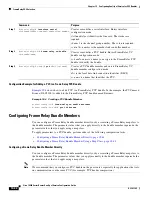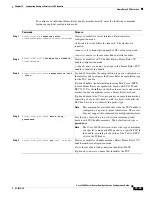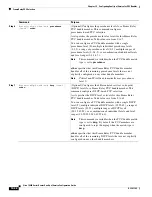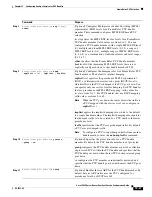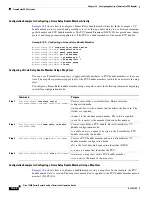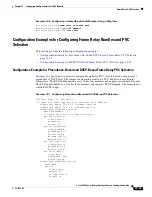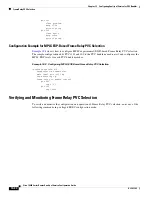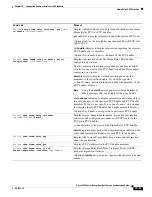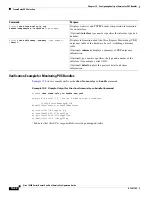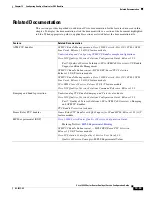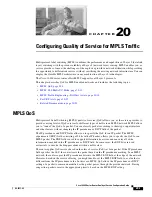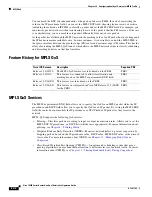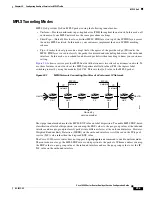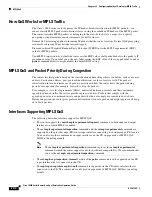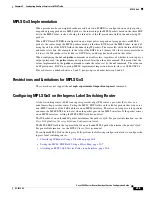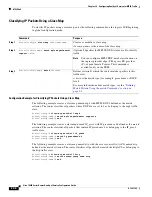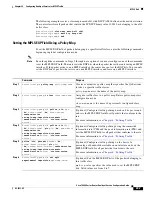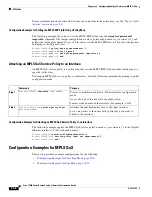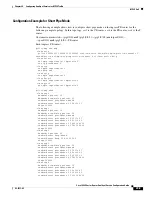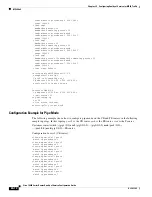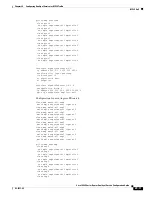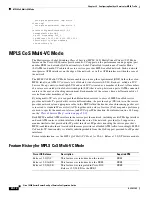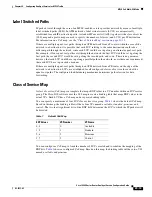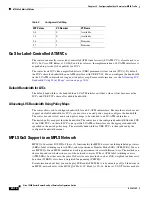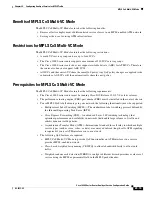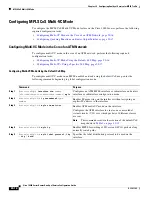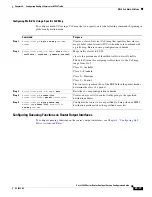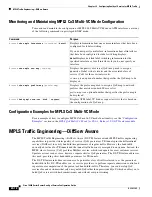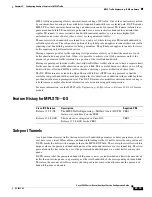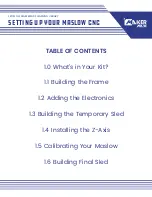
20-4
Cisco 10000 Series Router Quality of Service Configuration Guide
OL-7433-09
Chapter 20 Configuring Quality of Service for MPLS Traffic
MPLS QoS
How QoS Works for MPLS Traffic
The Cisco 10000 series router bypasses the IP header-based classification for MPLS packets—you
cannot classify MPLS packets into distinct classes using the embedded IP header of the MPLS packet.
The router classifies MPLS packets as belonging to the class-default class, except if you specify
qos-group or input-interface match statements for traffic classes.
Normal QoS processing applies to incoming IP packets that the router later tags. Normal QoS processing
resumes for outgoing IP packets that arrived tagged.
Precedence-based Weighted Random Early Detection (WRED) uses the MPLS experimental (EXP)
value for MPLS packets.
Upon MPLS imposition, by default the router sets the EXP values of all pushed labels to the packet’s IP
precedence value. Upon label swap, the new label carries the EXP value of the swapped label. A
set
or
police
command directive might modify the default EXP setting.
MPLS QoS and Packet Priority During Congestion
The router classifies packets based on the classification and marking criteria you define, such as a source
address, destination address, port, protocol identification, or class of service field. The packets’
classification in turn determines each packet’s priority and how the router treats the packet during
periods of congestion (for example, forward or drop the packet).
For example, service level agreements (SLAs), contracted between providers and their customers,
specify how much traffic the service provider agrees to deliver. Packets that comply with the
agreed-upon rate are considered in-rate and packets that do not comply are considered out-of-rate.
During congestion, the router gives preferential treatment to in-rate packets and might aggressively drop
out-of-rate packets.
Interfaces Supporting MPLS QoS
The following describes interface support for MPLS QoS:
•
The router supports the
match mpls experimental topmost
command on both input and output
interfaces on which MPLS is enabled.
•
The
set mpls experimental imposition
command and the
set mpls experimental
command are
supported on the provider edge (PE) router input interface connecting to customer edge (CE) router.
You can also use these commands on input interfaces on the CE, in pipe mode of MPLS QoS
DiffServ tunneling models.
Note
The
set mpls experimental imposition
command replaces the
set mpls experimental
command, which the router supports only for backward compatibility. We recommend that
you use the
set mpls experimental imposition
command.
•
The
set-mpls-exp-imposition-transmit
action of the
police
command is only supported on the PE
input interface that is connected to the CE.
•
The
mpls ip encapsulate explicit-null
command is supported on the CE router interface that is
connected to the PE. This command is only used in pipe mode of MPLS QoS DiffServ tunneling
models.

